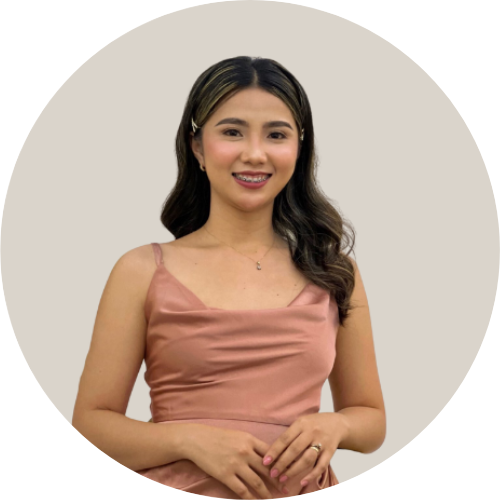MT vs. PT: Job roles
While both professions aim to enhance the body’s functionality and relaxation, they still have different job roles. Recognizing the difference between these two can help individuals seek the appropriate treatment for their specific conditions. Check out the checklist below to better understand their responsibilities:
Massage Therapist (MT) Responsibilities:
-
Administering therapeutic interventions to promote pain management and improve mobility.
-
Conducting gait and balance assessments to address walking and stability issues.
-
Assessing clients' needs, health history, and specific goals for the session.
-
Promoting relaxation, stress reduction, and overall well-being through massage therapy.
-
Collaborating with other healthcare professionals to coordinate care and optimize patient outcomes.
-
Incorporating additional therapeutic modes like aromatherapy, hot stone massage, or reflexology when appropriate.
-
Implementing specialized techniques such as neuromuscular reeducation or proprioceptive training.
-
Maintaining accurate and confidential client records, including health history, treatment plans, and progress reports.
-
Performing various massage techniques. This includes Swedish, deep tissue, sports massage, or trigger point therapy.
-
Applying appropriate pressure and manipulating muscles and soft tissues to address specific issues.
-
Developing personalized treatment plans based on client preferences and concerns.
-
Providing pain relief and addressing muscular tension, injuries, or chronic pain conditions.
-
Using advanced technologies and equipment for therapeutic purposes. This includes laser therapy and electrical muscle stimulation.
Physical Therapist (PT) Responsibilities:
-
Administering therapeutic interventions to promote pain management and improve mobility.
-
Conducting gait and balance assessments to address walking and stability issues.
-
Assessing clients' needs, health history, and specific goals for the session.
-
Performing comprehensive evaluations to determine the impact of physical impairments on functional abilities.
-
Collaborating with other healthcare professionals to coordinate care and optimize patient outcomes.
-
Using advanced technologies and equipment for therapeutic purposes. This includes laser therapy and electrical muscle stimulation.
-
Providing pain relief and addressing muscular tension, injuries, or chronic pain conditions.
-
Maintaining accurate and confidential client records, including health history, treatment plans, and progress reports.
MT vs. PT: Education and Certification
One of the biggest differences between the two professions is education requirements. While MTs may qualify for a license in a year or less, PTs can complete extensive education to earn their doctorate in physical therapy. They usually earn their physical therapist license within eight to 10 years.
For MTs, you need to complete a training program with 500 - 1000 hours. Then they need to earn certification by passing the Massage & Bodywork Licensing Examination (MBLEx) and a Background Check. Your employer may want you to have CPR Certification as well.
Indiana, Virginia, and California require MTs to have a massage therapy certification. Wyoming, Kansas, Oklahoma, Minnesota, and Vermont don’t currently license MTs. Each state has its own specific requirements for MTs to be eligible to work. Make sure to learn about your state’s specific massage therapy certification status.
Here’s a quick run-through of the steps to be an MT:
-
Enter a massage therapist training program
-
Complete hands-on experience
-
Complete the MBLEx license exam
-
Apply for a state license
PTs need to embark on years of education to earn their license, but they can do this in several ways. Depending on the program, they can finish through a 3-year undergraduate program or enter a freshman PT program right away. Some programs will accept a bachelor's degree in a related field as well. These programs will give them a knowledge foundation in neuroscience, pharmacology, and anatomy.
You can also start off as a PT Assistant. Or you can do the traditional way, which is obtaining a DPT and then passing the exam. Here’s a general but subjective overview of the steps to become a PT:
-
Earn a bachelor's degree in a related field
-
Earn a Doctor of Physical Therapy degree (DPT) from an accredited program
-
Complete clinical rotations
-
Pass the National Physical Therapy Examination (NPTE)
-
Get a license in your state
MT vs. PT: Career Overview
When it comes to rewarding careers in the healthcare industry, Both MT and PT offer immense opportunities. May it be through hands-on healing or rehabilitation and movement, both professions provide excellent career prospects. Read below to see the career overview of both professions.
Massage Therapy:
-
Average Annual Salary: $46,910
-
Average Wage per Hour: $22.55
-
Employment Projection (2021 to 2031): 20% growth
-
Projected Job Openings Annually: Approximately 25,300
Work Environments:
-
Massage Therapy Clinics
-
Spas and Resorts
-
Chiropractic and Physical Therapy Offices
-
Sports and Fitness Centers
-
Medical Facilities
-
Corporate Settings (Employee Wellness Programs)
-
Home-Based Practices
-
Mobile Massage Services
-
Malls
Physical Therapy:
-
Average Annual Salary: $95,620
-
Average Wage per Hour: $45.97
-
Employment Projection (2021 to 2031): 17% growth
-
Projected Job Openings Annually: Approximately 15,400
Work Environments:
-
Hospitals
-
Outpatient Clinics
-
Rehabilitation Centers
-
Private Practice
-
Nursing Homes and Long-Term Care Facilities
-
Schools and Educational Institutions
-
Home Health
-
Sports and Fitness Centers
-
Research and Academia




